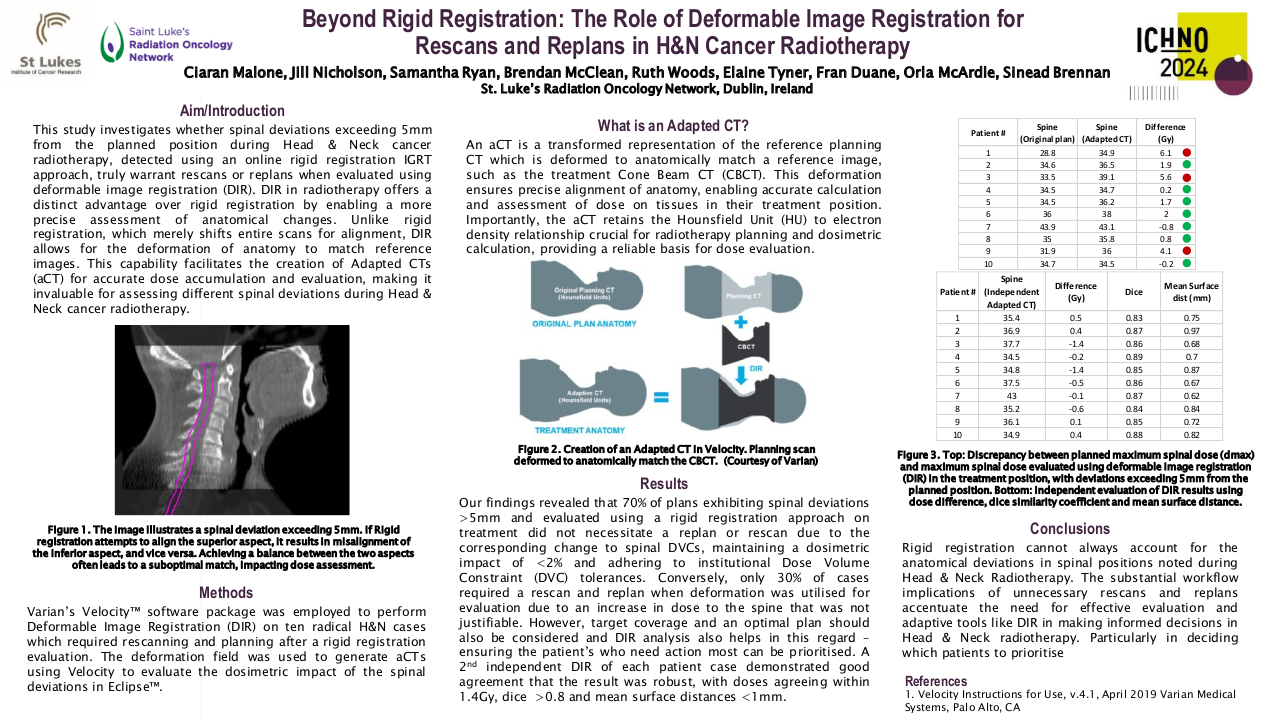Adaptive radiation therapy
Purpose/Objective
The management of head and neck malignancy requires a multidisciplinary team approach, with an understanding that this disease can produce significant morbidity. Reduction of deformity and restoration of function are important to the management of head and neck cancer. The cure of cancer, with preservation of structure and function (with good cosmetic results), has become more evident with advances in modern radiation oncology because of technologic gains in radiation physics and insights into radiation biology.
Treatment that causes the permanent loss of vision, smell, taste, or hearing should be evaluated concerning its effect on quality of life and survival. Maintenance of food passageways and airways is essential. Treatment decisions should also consider the patient’s ability to speak. The loss of speech results in significant changes in the patient’s lifestyle and therefore lowers the patient’s quality of life. With early detection techniques, head and neck cancers treated with radiation therapy allow for greater preservation of voice and swallowing. Head and neck cancer has witnessed various innovative approaches that include diagnosis and treatment.
The innovative approaches in head and neck oncology involve use of adaptive radiation therapy for large lesions to aid in optimizing treatment plans and improve dose distribution in 3DCRT and IMRT plans.
Material/Methods
A study case example of adaptive radiotherapy involves a male patient who presented to the radiation therapy department with buccal mucosa tumor, a large lesion protruding in the cheek. A 3dimensional conformal radiation therapy plan was made with right and left lateral opposing beams and an anterior neck beam for the nodes. After 4000cGy, it was noted that there was considerable decrease in the size of the tumor. The thermoplastic mask did not correctly immobilize the site of interest.
Results
A CT scan for simulation was performed on the patient and the thermoplastic mask was remoulded to fit into the individual site of interest and consecutively a treatment plan was optimized with reduced margins. This is a form of adaptive radiotherapy. With systematic monitoring of treatment variations, adaptive RT allows reoptimization of the treatment plan during the course of treatment. This process adjusts field margins and treatment dose with routine customization to each individual patient to achieve a safe dose escalation.
Conclusion
Scanning the patient between treatments may guide the treatment strategy in terms of changing the treatment field, escalating dose without overdosing critical structures such as the parotid and spinal cord, and guiding modulation of dose delivery based on tumor growth. These are the few benefits of integrating adaptive radiotherapy in head and neck oncology. The preservation of salivary function with sparing of at least one parotid gland has been a primary objective of head and neck radiotherapy.
Adaptive radiotherapy is also a form of corrective strategy in IGRT. Whereby after a set number of fractions have been completed and there is considerable decrease in the tumor size, prior to the next fraction a more suitable plan is made for tumor control and to minimize dose to critical organs at risk. This is crucial in head and neck oncology. Modification of the treatment plan is done or an appropriate plan is chosen afterwards. IGRT aids in the detection of changes in patient or tumor size. Tumors shrink, we can’t use one plan for the patient the same everyday and especially for head and neck cancer which has significantly more fractions.
1.Washington,C.M,Leaver,D.T and Megan,T.5th ed.(2020)Principles and Practice of Radiation Therapy Elsevier:Elsevier.2. Murat,B.,Gokhan,O. and Cuneyt E.2010.Basic Radiation Oncology.Springer-Verlag Berlin Heidelberg.






